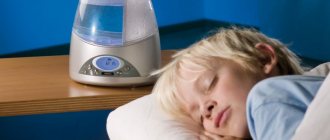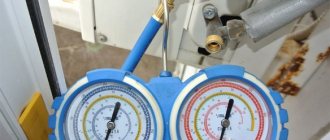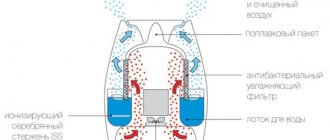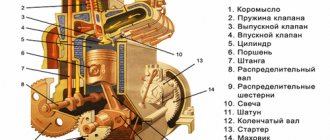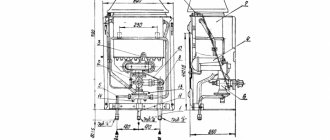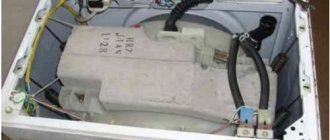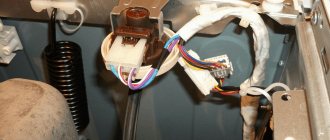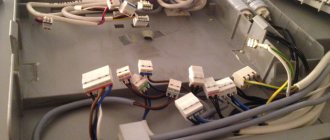Dry air in an apartment is not uncommon, especially during the heating season, when all the moisture evaporates due to radiators and heaters. It harms the human body, plants and even wooden furniture. One of the best inventions for eliminating dryness is a humidifier, which takes up little space and does its job effectively.
But in some cases, the device malfunctions, stops supplying steam and emits an unpleasant odor. Let's consider the reasons for these negative phenomena for the main types of devices.
Types of humidifiers
There are three types of humidifiers:
- Steam. Humidification occurs as a result of heating and subsequent boiling of water. Hot steam can increase air humidity up to 100%.
- Ultrasonic. This is a cold fog generator that quickly creates a high level of humidity in the room.
- Traditional (cold). The principle of operation is that dry air passes through a wet filter and natural evaporation occurs without heating. Thanks to the powerful built-in fan, the evaporated moisture is evenly distributed throughout the room.
How they work
Household appliances tend to fail, so knowledge about the device will help identify the cause of the problem. The design of the device depends on the principle of its operation; a steam humidifier and an ultrasonic one have completely different structures:
- Steam. The humidifier has a built-in water tank and heating element. From the reservoir, water flows through the dispenser in small portions into an insulated heating chamber, quickly boils and evaporates.
- Ultrasonic. It consists of a water tank with a level sensor, a vaporization chamber with an ultrasonic membrane, and a low-power fan. Water through the valve enters the membrane, which vibrates at ultrasonic speed and is broken into small particles. The cold mist is pushed out by the fan.
Can a humidifier cause a cold?
To find out whether the air emitted by the device will cause hypothermia (and subsequently a cold), you should clarify which air stream comes out of the device.
This indicator depends on its type and principle of operation:
- the traditional option is a stream at room temperature;
- steam option - warm jet;
- ultrasonic version - a jet at room temperature.
Considering this feature of the devices, you can be confident in their safety. Humidifiers do not cause hypothermia or cause colds.
Doctors' opinion
Professional doctors also confirm the safety of the devices. Pediatrician E. O. Komarovsky, an authority for parents, claims that the main cause of frequent respiratory diseases in children is dry air, and not the use of a humidifier. Dr. Komarovsky considers low humidity “one of the global problems of civilization.” Proper use of humidifiers can overcome this problem.
Is it necessary to humidify the air in the room of a sick person?
The use of humidifiers becomes especially important if there are patients suffering from pulmonary diseases in the room. This is explained by the fact that the devices support the protective capabilities of the nasal mucous membranes and prevent blood thickening, which can disrupt the normal functioning of human internal organs.
Therefore, maintaining air humidity is a real help in the fight that a weakened body wages against disease.
Emerging problems
There is no steam. Causes:
- problems with the generator;
- damaged fan;
- oxidized contacts.
We recommend that you read: Industrial air humidifier
Unpleasant smell. Causes:
- the water began to bloom;
- There are bacteria in the humidifier.
No air is coming. Causes:
- debris has accumulated in the filter;
- the fan does not work;
- the engine has failed.
No water supplied. Causes:
- The water level sensor stopped working;
- The emitter is broken.
Help: If the device will not be used for some time, the water must be drained from it, as it will stagnate.
Video on the topic
Excessive dryness of indoor air negatively affects not only the condition of surrounding objects, but also the health of the people in it. Moreover, in the winter season the situation can become critical, because the operation of heating devices dries out the air even more. This is why it is so important to have a humidifier at home and monitor its operation.
Today we will talk about what to do if the humidifier does not work, and in what cases you can fix the problem yourself.
What you need to know: how a humidifier works and how it works
Traditional
The design and principle of operation of traditional air humidifiers are the simplest of the existing ones. The mechanism of operation of such devices is based on the natural evaporation of moisture:
- water poured into the tank flows into the pan and rises through the evaporator;
- the air moves inside the device due to the built-in fan, simultaneously becoming saturated with moisture and purified as it passes through the filters.
In traditional humidifiers, the evaporative elements are cassettes made of multi-layer paper with antibacterial impregnation. Their service life is only 2-3 months, so more expensive models use sponge cartridges or plastic discs with many cavities.
Steam
The operating principle of steam humidifiers is often compared to the operation of an electric kettle. The main difference is that in a humidifier, water flows to the heater in a small amount, and the rest of the liquid remains cold.
A steam humidifier saturates the air with moisture by constantly heating water to the state of steam. The operating diagram of such a device is as follows:
- water is poured into a special tank made of high-strength heat-resistant plastic;
- close the tank lid tightly and turn on the device;
- the heating element brings the liquid to a temperature of 80 degrees;
- The steam generated from heating exits through specially designated openings and humidifies the air.
The appearance may vary from device to device, but the internal structure of steam humidifiers is always the same and includes:
- cooler for air intake;
- management block;
- a heating element;
- built-in generator.
Ultrasonic
The operating principle of ultrasonic air humidifiers is based on high-frequency vibrations of a special membrane:
- carefully purified water is poured into the container;
- from the tank water enters the evaporation chamber;
- high-frequency vibrations of the membrane cause tiny droplets of water to break away from the surface and form “cold” steam;
- Due to the operation of the fan, the steam rises to the spray nozzles and leaves the device.
The ultrasonic device includes:
- electronic component;
- amplifier block;
- battery;
- ceramic emitter;
- ventilation system.
More expensive models are equipped with:
- cartridges for water purification and softening;
- ultraviolet lamp for bactericidal steam treatment.
Some models of humidifiers are combined filter complexes (water, photocatalytic and antibacterial impregnated) for air disinfection.
The features and advantages of ultrasonic humidifiers are described in detail here:
What to do if there is no steam coming out of the humidifier?
Why doesn't it soar, although it works?
The reason for the lack of steam when the humidifier is operating may be:
- generator breakdown;
- oxidation of contacts;
- fan failure;
- membrane damage (in ultrasonic devices)
How to fix?
To fix the problem, you must first determine the cause. Some technicians recommend listening to the device while it is operating - if there is no characteristic “gurgling”, then the problem lies in the power board or generator.
To understand whether the generator is working, you must:
- remove the cover from the device;
- turn on the device for two minutes without touching the internal elements;
- disconnect the device from the network;
- touch the radiator on the electronic circuit.
If there is a “gurgling” sound, but the membrane is working, then the problem may be in the fan. To find out for sure, you need to measure the voltage on the turbine windings. If it is, but the blades do not spin, then the fan must be replaced. If there is no voltage, then the reason is the power board.
If the membrane and fan are working, but there is still no steam, then you need to check the air intake filter.
If the humidifier does not turn on and does not work: reasons and how to fix it?
If the humidifier stops turning on, then the first step is to start checking the serviceability of the outlet by plugging in other working equipment. If there are no problems with the outlet, then the next step is to inspect the device for mechanical damage.
Once there is no doubt about the integrity of the case, you need to move on to the electrical part - the fuse in the power plug and the connection of the power cord to the device. If any of the listed elements fails, it must be replaced.
If everything is in order with the wire and fuse, then the next step is to check the control board of the device - there should be no blackening of parts or poorly soldered elements on it. If data is detected, burnt parts must be replaced, and damage must be re-soldered.
We offer you an example of repairing a humidifier below:
How to get rid of the smell?
An unpleasant odor from the humidifier indicates bacterial growth or algal blooms. To eliminate this problem, the device must be cleaned of mold.
You can do this as follows:
- disconnect the device from the network;
- pour out the water;
- fill the tank and lower section of the device with hydrogen peroxide or vinegar solution;
- Using a soft brush, clean the container and leave the lower section to soak for two hours;
- Rinse the elements with water and assemble the device.
Operating rules
To avoid problems with the device, you should follow certain rules for using a humidifier:
- If possible, fill the humidifier with distilled water, as it contains a minimum amount of unnecessary bacteria, minerals and molecules.
- Change the water every day.
- Wash the container containing the water several times a week without using cleaning products.
- The humidifier should not be located next to a heater, radiator, etc.
- Clean the filter periodically.
- It is necessary that the humidifier stands on a flat surface, in a place inaccessible to children.
- Do not touch the device with wet hands.
- Make sure that no foreign liquid gets into the device.
- Do not pour more water into the container than required.
If you can’t fix the humidifier yourself, you need to contact a specialist, since electronics are a delicate matter.
